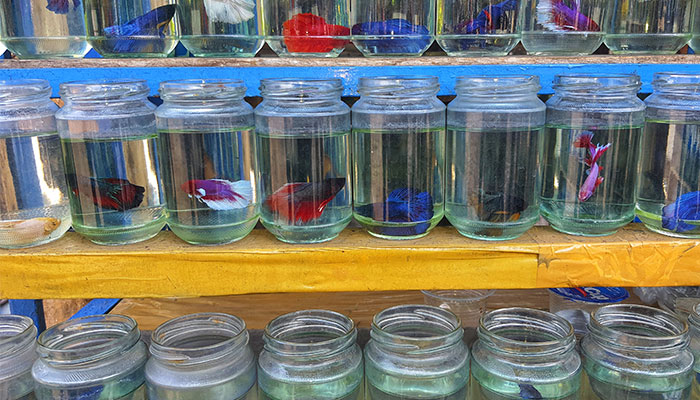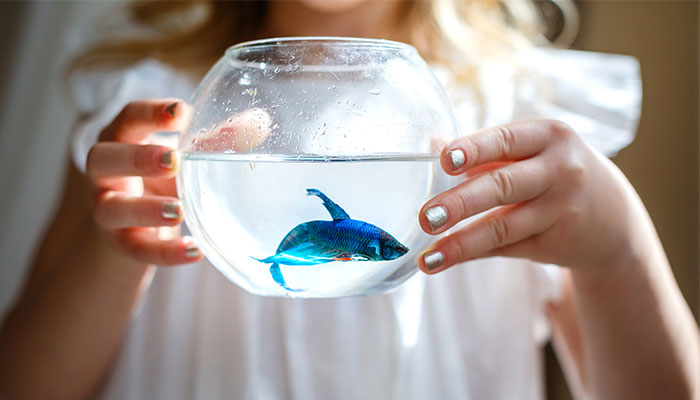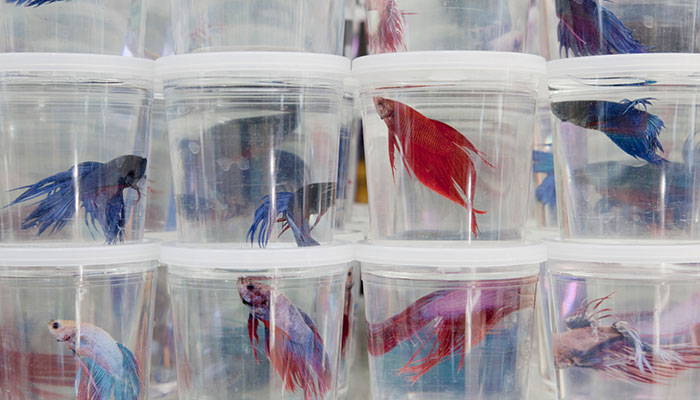A new study published in the Journal of Animal Welfare shows the typical housing conditions for Siamese fighting fish — one of the world’s most popular pets — may cause them significant harm.

The study, based in Singapore, and with authors from Singapore, Australia and France, examined how tank size and furnishings impact the behaviour of Siamese fighting fish (Betta splendens), known for their striking colours and flowing fins.
Thailand alone exported around 20 million Siamese fighting fish in 2018, with major markets including the USA, China, Singapore, France and Iran.
“Current guidelines for appropriate tank size for Betta fish are vague and more concerned with water quality than other fish welfare concerns,” says Australian-based lead author Professor Culum Brown, from Macquarie University’s School of Natural Sciences.
- Take note: How AI will improve your visit to the doctor
- Why some birds divorce and others partner for life
The paper titled "Life beyond a jar: Effects of tank size and furnishings on the behaviour and welfare of Siamese fighting fish (Betta splendens)," challenges long-held practices in the ornamental fish trade, showing how fish change their behaviour in the small jars and containers they are commonly sold and kept in.
“Siamese fighters are often treated as ornaments rather than animals,” says Dr Naomi Clark-Shen, a marine biologist from James Cook University who led the study in Singapore.
“Our study suggests they need to be treated much better, especially how they are housed.”
Housing Comparison
The research team studied 13 male Siamese fighting fish across five different housing conditions ranging from 1.5-litre jars to 19.3-litre aquaria, both with and without environmental enrichment like plants and hiding spots.
The findings revealed fish in larger tanks were significantly more active, swimming on average 92 seconds more during observation periods compared to those in jars.

They also displayed more natural behaviours like foraging and exploration.
“Research across multiple fish species shows that, like other captive animals, fish need spacious, natural-style environments to thrive, with small bare tanks leading to stressed behaviour and reduced wellbeing,” says Professor Brown.
"It was clear that Siamese fighting fish are better off in larger, furnished tanks," says Dr Clark-Shen.
Complexity matters
Tank complexity proved just as important as size. When given furnished tanks with gravel, plants and hiding spots, the fish spent nearly half their resting time using these features rather than remaining suspended in open water.
We hope that aquariums, pet shops and people who keep fish at home realise that these animals are sentient, and respond to the urgent need to improve their lives.
Fish kept in small or barren environments showed concerning behaviours including repetitive swimming patterns, extended periods of hovering motionless, and increased interaction with tank walls.
Based on the research findings, the team recommends a minimum tank size of 5.6 litres for displaying and selling Siamese fighting fish, with even larger tanks for keeping them as pets.

All tanks should contain gravel, live plants and refuges, with designs favouring width over height to reflect their natural habitat.
“While we hope policy makers will improve regulations around the sale and display of these animals, we also hope that aquariums, pet shops and people who keep fish at home, realise that these animals are sentient and respond to the urgent need to improve their lives,” says Professor Brown.
The research also revealed that individual fish showed distinct personalities and preferences, suggesting that carers pay attention to each fish’s specific needs when setting up their environment.
After completing the study, all fish were carefully rehomed to appropriate-sized tanks with proper enrichment. Their new owners agreed to maintain the higher welfare standards identified by the research.
Culum Brown is a Professor in the School of Natural Sciences, Macquarie University.



